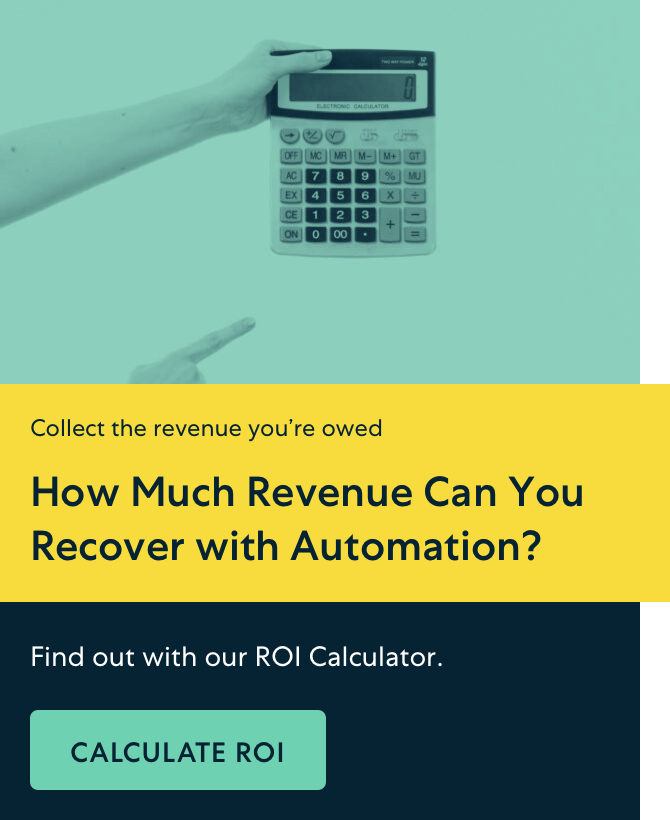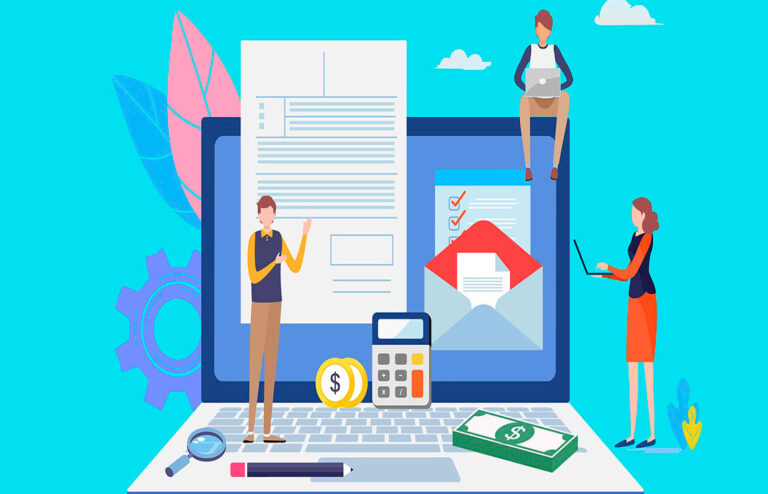In recent years, the Software-as-a-Service model (SaaS) model has seen a tremendous boom. While more businesses have adopted the SaaS business model, we can also see more companies using SaaS products.
According to Statista, the estimated value of the SaaS market in 2023 was approximately $197 billion. And this number will keep growing in the coming years.
If you’re currently planning on starting a tech-based company, the SaaS business model would be a great choice.
This guide will help you know the ins and outs of SaaS companies along with their benefits, KPIs, and some successful examples of SaaS-based businesses.
TL;DR
- A Software-as-a-Service (SaaS) company is a business that delivers software products on a subscription basis instead of the traditional purchase model. Customers can directly use it through the internet without installing it on their systems.
- The SaaS business model uses subscription-based pricing models and has multiple tiers to accommodate versatile business requirements. Customers only pay for the required resources or pay a flat price every month.
- Businesses benefit from SaaS products due to their cost-effectiveness, convenience, and scalability.
What is a SaaS company?
A Software-as-a-Service (SaaS) company is a business that delivers software products on a subscription basis instead of the traditional purchase model.
The software product is hosted by the company on its central servers. Customers can directly use it through the internet without installing it on their systems.
As the product is centrally hosted, customers can directly benefit from updates and maintenance without individually upgrading the software.
While the SaaS model seems like a norm today, the evolution of SaaS has been interesting.
Evolution of the SaaS Industry
It wasn’t until the early 2000s that SaaS products came into the market. The easy access to the internet and the popularity of personal computers were some of the few factors that contributed to the origin of SaaS.
Salesforce became the pioneer in the SaaS landscape with the launch of its Customer Relationship Management (CRM) software in 1999. This was quickly followed by NetSuite, Concur, and other companies launching their own SaaS products. Many of the early SaaS products were sold through CD-ROMs and floppy disks.
However, scaling became a challenge as web browser-based and floppy disk-based models couldn’t accommodate the rapidly growing demands of large businesses.
This was solved by Amazon and later Google, who built data centers that could accommodate multiple clients without limiting the resources — marking the beginning of cloud computing.
Today, cloud computing has become the backbone of the SaaS boom as companies rely on this infrastructure to provide readily scalable subscription-based software.
SaaS Business Model Explained
SaaS companies allow customers the flexibility to subscribe to software products according to their requirements instead of making a full purchase. These companies have a unique business model that differs from that of traditional companies.
The two key areas that SaaS companies focus on are pricing and customer retention.
Subscription models and pricing strategies
Conventional software companies usually sell products for a lump sum, one-time payment. They often rely on large profits from the sale and are, hence, quite expensive. While this model serves big corporations, smaller businesses find it difficult to access the required software due to the costs involved.
The SaaS business model makes software accessible to everyone through its subscription model. Customers can choose from different plans or tiers according to their requirements or budget.
These pricing strategies can either be based on a fixed monthly contract or as per usage.
For instance, Gusto, an HR SaaS company, has three tiers at flat pricing per month.
In contrast, Databricks, another SaaS business, prices their software according to usage, with a fixed cost per unit.
Customer acquisition and retention strategies
Since SaaS companies rely on subscriptions for profit, both customer acquisition and retention become equally important. Many SaaS businesses rely on a freemium model for customer acquisition.
This involves giving free access to a few features or a single product to attract leads and then guide them to make a purchase. Other strategies include free trials, integrations with other software, and partnerships.
Once customers are acquired, successful SaaS businesses usually retain most of them due to the nature of the product. ChartMogul calculates the customer retention rate of top SaaS companies to be between 85-87%.
Revenue recognition in SaaS
As SaaS businesses don’t get the complete payment in a single transaction, revenue recognition becomes slightly difficult. Instead of identifying the full sum in a contract as their revenue, most businesses rely on a monthly recurring revenue (MRR) or annual recurring revenue (ARR) model.
These models take into account the revenue earned each month or year from monthly or annual subscriptions. SaaS businesses can also use other revenue recognition methods like:
- Deferred revenue: Revenue that is billed prior to delivering the service.
- Unbilled revenue: Revenue earned for delivering a service that is unbilled due to billing cycles or other constraints.
Challenges and solutions in the SaaS business model
Apart from revenue recognition and pricing, SaaS companies also face other unique challenges that set them apart from conventional software companies.
- Lack of conversions: Freemium and free trials are successful only when they convert the free user into a paid customer. However, it’s possible for users to be satisfied with the freely available features, leading to failed conversions. It’s essential to maintain a balance of free features and attractive paid attributes to generate more revenue.
- Improper pricing model: SaaS pricing models aren’t a one-size-fits-all strategy. Some products are better suited for flat monthly pricing, while others may require pricing based on units or users. Carefully assessing the way customers use the SaaS product can help determine the right pricing strategy.
- Long-term retention: As SaaS businesses rely on recurring revenue, customer retention is crucial. However, early leads may be hesitant to make long-term commitments. You can tackle this by offering incentives such as free upgrades or advanced features depending on the contract term.
- Security concerns: As SaaS applications are centrally hosted and accessed by multiple clients, there’s a risk of data breaches and cybersecurity threats. This includes data leaks, unauthorized access, and malware. To prevent this, you need to ensure that sufficient security measures are in place to protect business data.
Data encryptions, firewalls, and authentication are some of the reliable ways SaaS companies can protect their data.
Benefits of SaaS
As discussed earlier, the SaaS model makes software easily accessible for all types of businesses — from large companies to individual users. In addition, choosing a SaaS product provides businesses and individuals with the following benefits:
Cost-effectiveness
Purchasing multiple software products may not be financially feasible for small businesses. SaaS lets them enjoy the features of the required software products at a fraction of the price. There’s also limited commitment of a few months or years, so businesses can switch to another product if required.
With a pay-per-use model, businesses can also choose to only pay for the resources used, reducing cost wastage.
Scalability
SaaS offers the flexibility to scale up or down according to the workload. This is helpful for new and growing businesses that have unpredictable or fluctuating loads. Scalability also helps SaaS software providers free up resources for clients that require them, improving efficiency.
Convenience
SaaS products are convenient to use as they require no installation or downloading on individual computers. Customers can directly access them through the internet and use them as required. Large businesses can simply provide access to each employee instead of configuring the software for each user.
Regular updates
SaaS is centrally managed. Each user of a SaaS product gets access to the latest version of the software without manually updating it. Whether it is debugging or adding a new feature, the SaaS business can directly modify the central software to apply the changes for all users.
Key Performance Indicators (KPIs) for SaaS Businesses
Like conventional businesses, SaaS businesses have certain key performance indicators (KPIs) to track the progress and growth of the company. Common KPIs for SaaS businesses include:
Customer lifetime value (CLTV)
The CLTV represents the total revenue a SaaS business earns from a single customer throughout its lifetime. It shows the value each customer brings to the company. It’s crucial for SaaS businesses to acquire customers with a high CLTV, as the majority of their revenue comes from recurring customers.
Customer acquisition cost (CAC)
CAC is a metric that measures the total cost incurred by a SaaS business to acquire a single customer. It takes into account marketing, sales, and other spending to calculate how much a customer costs the company.
A CAC value lower than the CLTV value indicates profits.
Monthly recurring revenue (MRR)
The MRR is the fixed recurring revenue a SaaS business earns each month. This can be calculated by observing trends and assessing long-term contracts signed for the product. Apart from recognizing revenue, MRR also gives a good estimate of how well a SaaS business is growing financially.
Churn rate
The churn rate represents the number of customers lost during a period of time. A high churn rate indicates good customer acquisition strategies but poor retention efforts. It’s essential to keep the churn rate to a minimum to ensure consistent MRR and high CLTV.
Examples of Successful SaaS Companies
SaaS companies exist in every industry, ranging from finance to customer support. Let’s take a look at some of the successful SaaS companies in each sector:
- StaxBill
StaxBill is a payment software that helps you automate payrolls, simplify invoicing, and reduce billing time. It accommodates various types of billing, such as monthly subscriptions and revenue collection. The platform also helps with recurring revenue recognition and payment gateway management.
With StaxBill, customers have the flexibility to manage their subscriptions and product prices through their self-service portal. The SaaS platform helps with better invoicing, saving both time and costs allocated for billing and payments.
- Atlassian
Atlassian has a host of software solutions that aim to simplify IT and project management. Some of its popular products, like Jira and Trello, have helped manage the workflow of several major companies, such as Twitter.
Atlassian also serves multiple industries, including retail and telecommunications. Overall, SaaS companies aim to provide holistic solutions that accommodate the requirements of all business types.
- Mailchimp
Mailchimp is a SaaS brand by Intuit that helps manage email marketing campaigns. It allows you to automate emails, generate content, and optimize the campaign for more opens and clicks.
The SaaS platform aims to increase your email marketing revenue through numerous tools, including generative AI and analytics. It has multiple tiers of subscriptions that cater to enterprises, startups, and individuals.
- Shopify
Shopify is a well-known eCommerce platform that provides quick and easy ways to build an online store. Brands like Sephora and Kylie Cosmetics have built their website through Shopify’s interface.
Shopify provides affordable website plans that make the platform popular among new entrepreneurs who want to take their business online.
- Zoom
Zoom is a cloud-based video meeting platform that caters to both individuals and businesses. With features such as whiteboards and team chats, the platform aims to create virtual meeting rooms that are on par with physical ones.
Zoom uses a freemium model to attract and retain customers. While you can freely add a certain number of participants and access some features, hosting large meetings requires a paid subscription.
- Slack
Slack is a team management platform that enables seamless, real-time communication among workplace teams. With channels and huddles to replicate in-person workplaces, Slack has helped several remote businesses work efficiently.
Like Zoom, Slack also uses a freemium model by restricting certain features to its paid users.
- HubSpot
HubSpot is a SaaS software suite that’s designed for content management, customer experience, and marketing automation.
HubSpot has tools designed for almost every sales and marketing application, including lead generation, social media marketing, and feedback surveys. The SaaS company relies on Amazon Web Services (AWS) to host its products.
- Google Workspace
Hosted by the tech giant Google Workspace is a collection of SaaS applications that aims to improve productivity. The SaaS suite includes Meet, Docs, Sheets, Drive, and other tools by Google that help manage work.
While most of the tools are free to use in a personal capacity, for professional and large-scale use, you need to opt for their paid subscriptions.
The Future of SaaS
SaaS products has already become an integral part of today’s technological landscape. And the market is expected to keep growing, reaching a valuation of $374.50 billion by 2028.
With the growth of new technology, such as artificial intelligence and machine learning, we can see the evolution of AI-backed SaaS models in the future. For example, generative AI can be used to train chatbots for customer service SaaS applications.
AI and ML can streamline the interpretation and analysis of data in the SaaS industry and give rise to new, in-demand trends.
In the coming years, SaaS applications will also be more niche, catering to the needs of specific clients instead of having general applications. This vertical SaaS model will be more effective for niches like security, which need dedicated features.
Conclusion
The Software-as-a-Service model has become popular due to its fully managed, subscription-based model. With SaaS, businesses of all sizes and budgets can access the software they require.
As SaaS follows a business model different than that of conventional software companies, it also faces unique challenges with regard to pricing and customer retention.
However, with the improvement of cloud and AI technology, new trends like AI-backed SaaS and vertical SaaS applications will continue changing the digital landscape.
Quic FAQs about SaaS Business Model
Q: What is a SaaS business model, and how does it differ from traditional software models?
A SaaS (Software-as-a-Service) business model delivers software products via a subscription-based approach, allowing customers to access software over the internet without installation. Unlike traditional software models that require a one-time purchase and installation on individual machines, SaaS solutions are centrally hosted, offering automatic updates and maintenance. This model provides flexibility, scalability, and cost-effectiveness, making software accessible to businesses of all sizes.
Q: Why is the SaaS business model considered cost-effective?
The SaaS model is cost-effective because it eliminates the need for upfront hardware purchases and reduces IT management overhead. With subscription-based pricing, businesses pay only for what they use, either through a flat monthly fee or a pay-per-use model. This approach allows even small businesses to access advanced software features at a fraction of the cost of traditional software, with the flexibility to scale as needed.
Q: What are some common SaaS pricing strategies?
Common SaaS pricing strategies include flat-rate pricing, usage-based pricing, tiered pricing, and freemium models. Flat-rate pricing offers a fixed monthly fee, while usage-based pricing charges based on resource consumption. Tiered pricing provides multiple service levels with varying features and costs, and freemium models offer basic features for free, with charges for premium features.
Q: How do SaaS companies ensure customer retention?
SaaS companies focus on providing high-quality customer experiences, frequent updates, and reliable customer support to ensure retention. They often use strategies like free trials, loyalty programs, and personalized offers to encourage long-term subscriptions. Additionally, by continuously enhancing their product offerings and integrating with other software, SaaS companies maintain strong relationships with their customers.
Q: What are some notable SaaS companies to watch?
Notable SaaS companies to watch include Zoom, known for its video conferencing solutions; Shopify, an eCommerce platform; Atlassian, which offers project management tools; and Mailchimp, an email marketing platform. These companies continue to innovate and expand their services, making them leaders in their respective industries.
Q: How do SaaS companies handle revenue recognition?
SaaS companies often use models like Monthly Recurring Revenue (MRR) and Annual Recurring Revenue (ARR) to track revenue. These models focus on the recurring payments from subscriptions, rather than recognizing the entire contract value upfront. Deferred revenue and unbilled revenue are also used to manage income that hasn’t yet been earned or billed.
Q: What are the key performance indicators (KPIs) for SaaS businesses?
Key KPIs for SaaS businesses include Customer Lifetime Value (CLTV), Customer Acquisition Cost (CAC), Monthly Recurring Revenue (MRR), and churn rate. CLTV measures the total revenue from a customer over their lifetime, CAC calculates the cost of acquiring a new customer, MRR tracks the monthly income from subscriptions, and churn rate indicates customer loss over time.
Q: What challenges do SaaS companies face, and how can they overcome them?
Challenges for SaaS companies include high churn rates, security concerns, and finding the right pricing model. To overcome these, companies can focus on improving customer engagement and satisfaction, bolstering cybersecurity measures, and continuously analyzing customer usage data to refine pricing strategies. Offering value-added services and maintaining transparency also help build trust and loyalty.







